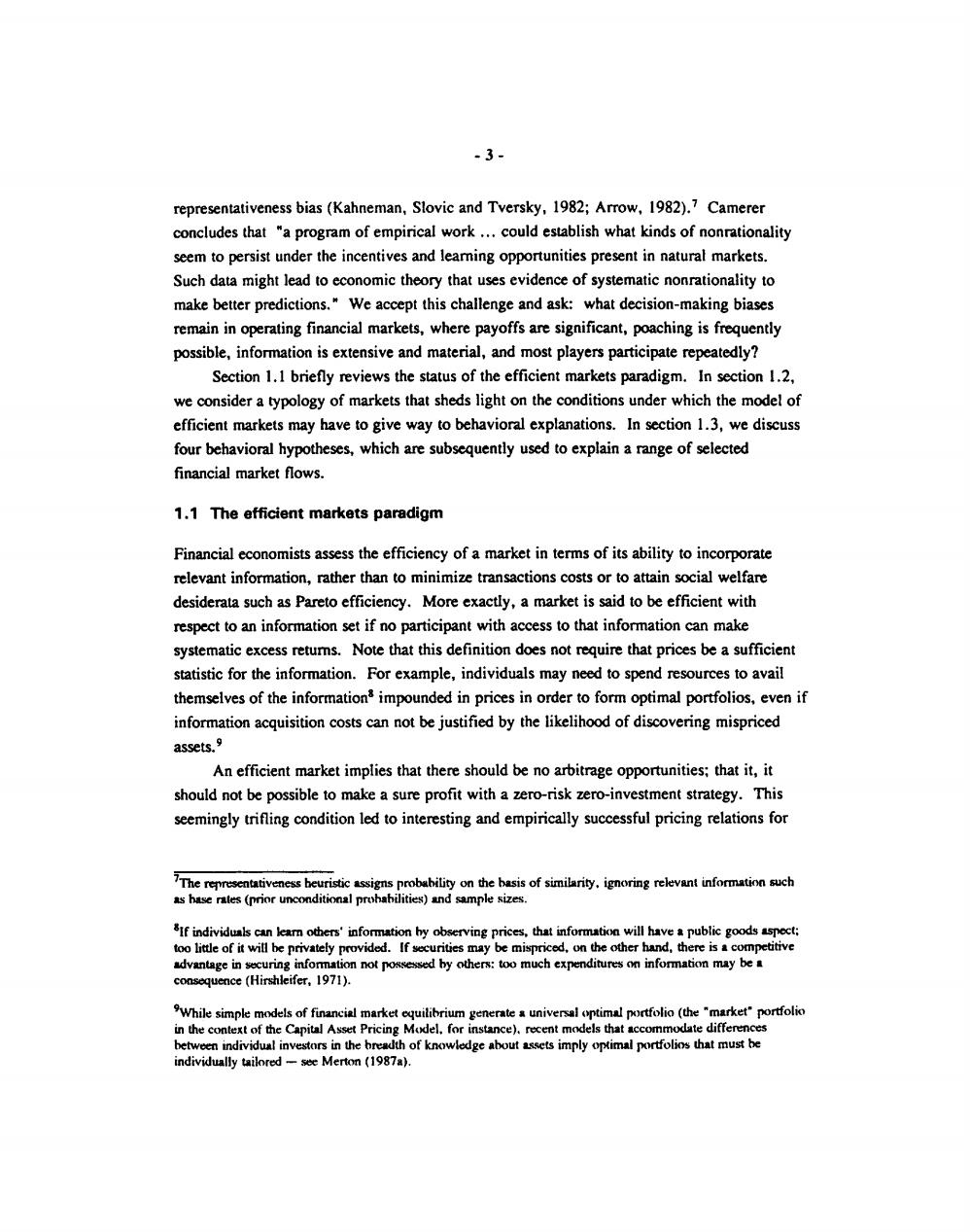正在加载图片...

-3- representativeness bias(Kahneman,Slovic and Tversky,1982;Arrow,1982).7 Camerer concludes that "a program of empirical work...could establish what kinds of nonrationality seem to persist under the incentives and leaming opportunities present in natural markets. Such data might lead to economic theory that uses evidence of systematic nonrationality to make better predictions."We accept this challenge and ask:what decision-making biases remain in operating financial markets,where payoffs are significant,poaching is frequently possible,information is extensive and material,and most players participate repeatedly? Section 1.1 briefly reviews the status of the efficient markets paradigm.In section 1.2, we consider a typology of markets that sheds light on the conditions under which the model of efficient markets may have to give way to behavioral explanations.In section 1.3,we discuss four behavioral hypotheses,which are subsequently used to explain a range of selected financial market flows. 1.1 The efficient markets paradigm Financial economists assess the efficiency of a market in terms of its ability to incorporate relevant information,rather than to minimize transactions costs or to attain social welfare desiderata such as Pareto efficiency.More exactly,a market is said to be efficient with respect to an information set if no participant with access to that information can make systematic excess retums.Note that this definition does not require that prices be a sufficient statistic for the information.For example,individuals may need to spend resources to avail themselves of the information3 impounded in prices in order to form optimal portfolios,even if information acquisition costs can not be justified by the likelihood of discovering mispriced assets.9 An efficient market implies that there should be no arbitrage opportunities;that it,it should not be possible to make a sure profit with a zero-risk zero-investment strategy.This seemingly trifling condition led to interesting and empirically successful pricing relations for TThebeuristicssig probability onhe basis of simirityignoring relvann as hase rates (prior unconditional prohahilities)and sample sizes. SIf individuals can kam others'information by observing prices,that information will have a public goods aspect: too little of it will be privately provided.If securities may be mispriced,on the other hand,there is a competitive advantage in securing information not possessed by others:too much expenditures on information may be consequence(Hirshleifer,1971). While simple models of financialqugenerniveoimorfolio (the"etportfolio in the context of the Capital Asset Pricing Model.for instance).recent models that accommodate differences between individual investors in the breadth of knowledge about assets imply optimal portfolios that must be individually tailored see Merton (1987a)